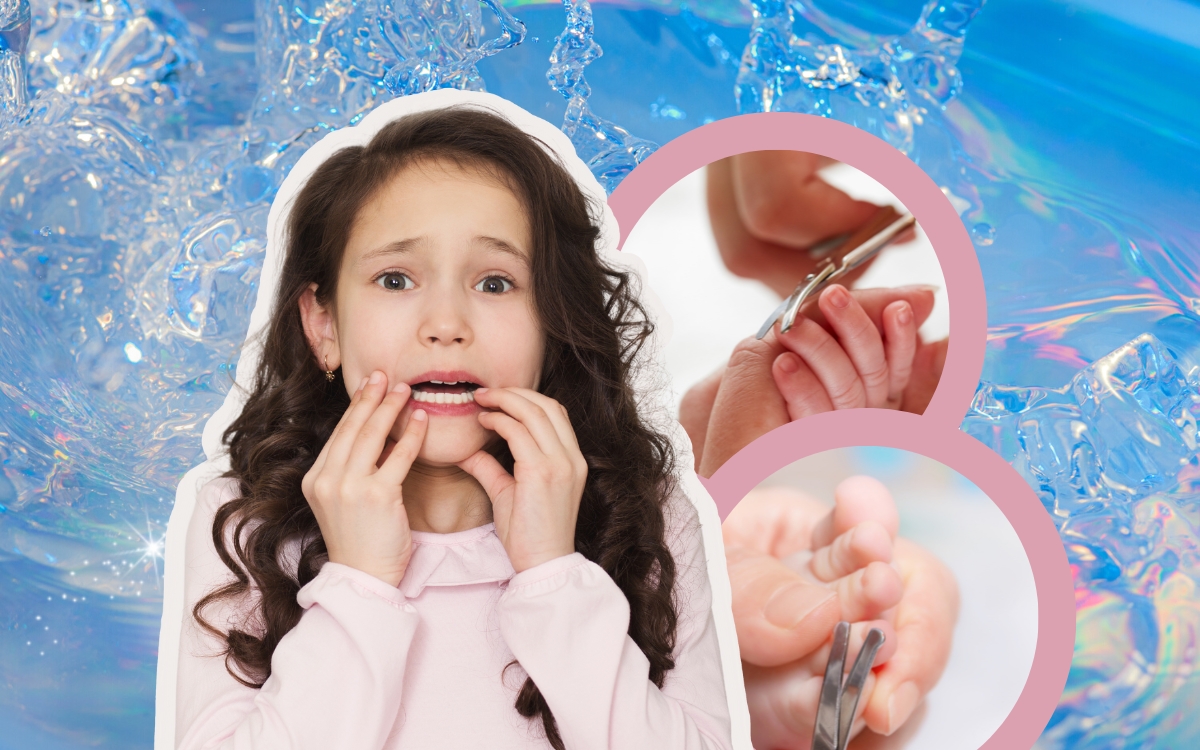While it may seem like a trivial matter, understanding the patterns of nail growth in toddlers can provide valuable insights into their overall health and well-being. In this article, we will delve into the fascinating world of nail growth, exploring the different stages, common concerns, and practical tips for maintaining healthy nails in your little ones. So, let’s get started and uncover the secrets behind those adorable little nails!

Stages of Nail Growth in Toddlers
Nail growth in toddlers goes through distinct stages that contribute to the development and overall health of their nails. Understanding these stages can provide valuable insights into the patterns and changes that occur as their nails grow. Let’s explore the three primary stages of nail growth in toddlers: initial development, active growth phase, and resting phase.
Initial Development
During the initial development stage, which typically occurs in infants, the nail plate begins to form. The nail matrix, located at the base of the nail, plays a crucial role in this process. It produces keratin cells that gradually harden and form the nail plate. At this stage, the nails are thin, soft, and delicate.
Active Growth Phase
As toddlers grow, their nails enter the active growth phase. During this phase, the nail matrix continues to produce new cells, leading to an increase in nail length. The speed of nail growth can vary among individuals, but generally, toddler nails grow at a rate of about 0.1 millimeters per day.
This stage is influenced by various factors, such as genetics, nutrition, and overall health. Healthy nail growth in toddlers is often associated with a balanced diet rich in essential nutrients like protein, vitamins, and minerals. Adequate hydration and good blood circulation also play a role in promoting nail growth.
Resting Phase and Nail Shedding
After the active growth phase, toddlers’ nails enter a resting phase. During this stage, nail growth slows down, and the nail plate remains relatively stable. The duration of the resting phase can vary among individuals but typically lasts a few weeks to a few months.
It’s important to note that nail shedding can occur during the resting phase. As new nail cells are produced, older cells gradually move forward, pushing the nail plate outward. This process leads to the shedding of older cells, allowing room for new cells to replace them. Nail shedding is a natural part of the nail growth cycle and should not cause concern unless accompanied by other symptoms or abnormalities.
Common Nail Growth Concerns in Toddlers
While nail growth in toddlers is generally a normal and healthy process, there are certain concerns that parents may encounter. Being aware of these common nail growth concerns can help parents address and manage them effectively. Let’s explore some of the most frequently encountered issues when it comes to nail growth in toddlers.
Slow Nail Growth
One common concern is slow nail growth in toddlers. Some toddlers may have nails that seem to grow at a slower rate compared to others. Factors such as genetics, overall health, and individual variations can contribute to this slower growth pattern.
In most cases, slow nail growth is not a cause for alarm and is simply a natural variation among children. However, if the slow nail growth is accompanied by other developmental concerns or unusual symptoms, it is advisable to consult a healthcare professional for further evaluation.
Excessive Nail Growth
On the other hand, some toddlers may exhibit rapid or excessive nail growth. Their nails may appear to grow at a faster rate than usual, requiring more frequent trimming and maintenance.
Excessive nail growth can sometimes be attributed to factors like increased blood circulation, certain hormonal changes, or genetic predispositions. While it may require extra attention and care, excessive nail growth is generally not a cause for concern unless it is accompanied by other abnormal symptoms.
Brittle or Fragile Nails
Another common concern in toddler nail growth is the development of brittle or fragile nails. Some toddlers may have nails that easily break, peel, or split, making them more susceptible to damage. Factors that can contribute to brittle nails include a lack of moisture, harsh environmental conditions, frequent exposure to water or chemicals, or nutritional deficiencies. Ensuring proper nail hygiene, applying moisturizing creams or oils, and protecting the nails from excessive exposure can help address and prevent further damage to brittle nails.
Ingrown Nails
Ingrown nails occur when the nail edge grows into the surrounding skin, causing discomfort, redness, and swelling. Although more commonly seen in older children and adults, toddlers can also experience ingrown nails.
Improper nail trimming techniques, tight-fitting shoes, or genetic predisposition can contribute to the development of ingrown nails. It is essential to carefully trim the nails straight across, avoiding curved or rounded edges. If an ingrown nail becomes infected or causes significant discomfort, seeking medical attention is recommended to prevent complications.
Factors Affecting Toddler Nail Growth Patterns
Various factors can influence the growth patterns of nails in toddlers. Understanding these factors can shed light on why some children may have different rates of nail growth or experience specific nail-related issues. Let’s explore the key factors that can affect toddler nail growth patterns.
Genetic Factors
Genetics play a significant role in determining many aspects of a child’s development, including nail growth patterns. Certain genetic traits can influence the rate of nail growth, thickness, and overall nail health.
For example, some toddlers may inherit genes that predispose them to faster or slower nail growth. Family history can provide insights into potential nail-related characteristics that may be passed down from one generation to the next.
Nutritional Factors
Nutrition plays a crucial role in the overall health and development of children, including their nail growth. Adequate intake of essential nutrients, such as protein, vitamins, and minerals, is necessary for healthy nail growth.
Protein contributes to the production of keratin, the primary protein in nails, while vitamins like biotin and minerals like zinc and iron play essential roles in maintaining strong and resilient nails. A well-balanced diet that includes a variety of nutrient-rich foods can support optimal nail growth in toddlers.
Environmental Factors
The environment in which toddlers grow and play can impact their nail growth patterns. Factors such as temperature, humidity, exposure to water, and chemicals can influence nail health.
Excessive moisture can weaken nails, making them more prone to brittleness or fungal infections. Harsh chemicals, such as those found in cleaning products or certain cosmetics, can also affect nail health. Protecting toddlers’ nails by wearing gloves when handling chemicals and ensuring proper drying after exposure to water can help mitigate environmental effects on nail growth.
Overall Health and Development
The overall health and development of a toddler can have an impact on nail growth patterns. Good circulation, sufficient rest, and a healthy immune system all contribute to optimal nail growth.
Children who are unwell or have underlying health conditions may experience changes in their nail growth patterns. Similarly, hormonal changes that occur during different stages of growth and development can affect the rate and characteristics of nail growth.
Nail Care Routines
Proper nail care routines also play a role in the growth patterns of toddler nails. Regular nail trimming, maintaining clean and dry nails, and avoiding habits like nail biting or picking can promote healthy nail growth.
Read This Next:
Trimming nails straight across and avoiding overly short cuts can help prevent ingrown nails. Teaching toddlers about proper nail hygiene and encouraging them to care for their nails from an early age can establish lifelong habits for maintaining healthy nails.
FAQs About Toddler Nail Growth Patterns
Parents often have questions and concerns about the nail growth patterns they observe in their toddlers. Understanding these frequently asked questions can provide clarity and guidance when it comes to caring for their child’s nails. Let’s explore some common FAQs about toddler nail growth patterns.
Do Nail Growth Patterns Vary Among Different Ethnicities?
Yes, nail growth patterns can vary among different ethnicities. While the basic process of nail growth remains the same, factors such as nail thickness, shape, and growth rate can differ. These variations are primarily influenced by genetic factors and can contribute to differences in nail appearance and growth patterns among different ethnic groups.
Should Nail Care Products Be Used on Toddler Nails?
It is generally recommended to keep the use of nail care products on toddler nails to a minimum. Toddler nails are delicate and more sensitive compared to adult nails. Harsh chemicals present in many nail care products can potentially cause irritation or allergic reactions. For routine nail care, it is best to focus on regular trimming, keeping the nails clean and dry, and maintaining proper nail hygiene rather than relying on additional products.
What Is the Typical Nail Growth Rate in Toddlers?
The typical nail growth rate in toddlers can vary, but on average, it is around 0.1 millimeters per day. This rate can fluctuate based on individual factors such as genetics, overall health, and nutrition. It’s important to remember that nail growth rates can vary among children, and observing a consistent growth pattern over time is more important than comparing it to specific measurements.
Can Nail Biting Affect Nail Growth in Toddlers?
Nail biting can potentially affect nail growth in toddlers. Constant nail biting can lead to uneven nail edges, damage to the nail bed, and even infection. Additionally, excessive nail biting may cause the nails to weaken and become more prone to breakage. Encouraging toddlers to refrain from nail biting habits and providing alternative outlets for their oral and sensory needs can help maintain healthy nail growth.
How Often Should Toddler Nails Be Trimmed?
The frequency of nail trimming for toddlers depends on their individual nail growth rates. On average, toddler nails may need to be trimmed every 1-2 weeks. However, it is important to observe the length of the nails regularly and trim them as needed. Keeping the nails at a comfortable length, where they do not extend past the fingertip, helps prevent accidental scratching and reduces the risk of ingrown nails.
Conclusion
In conclusion, understanding nail growth patterns in toddlers is an essential aspect of their overall health and development. By knowing what to expect and how to care for their tiny nails, you can ensure that your child’s nails remain healthy and problem-free.
Remember to keep an eye on any unusual nail growth or changes, and consult a healthcare professional if you have any concerns. With proper care and attention, you can help your toddler maintain healthy nails, promoting their overall well-being and confidence as they explore the world around them.









